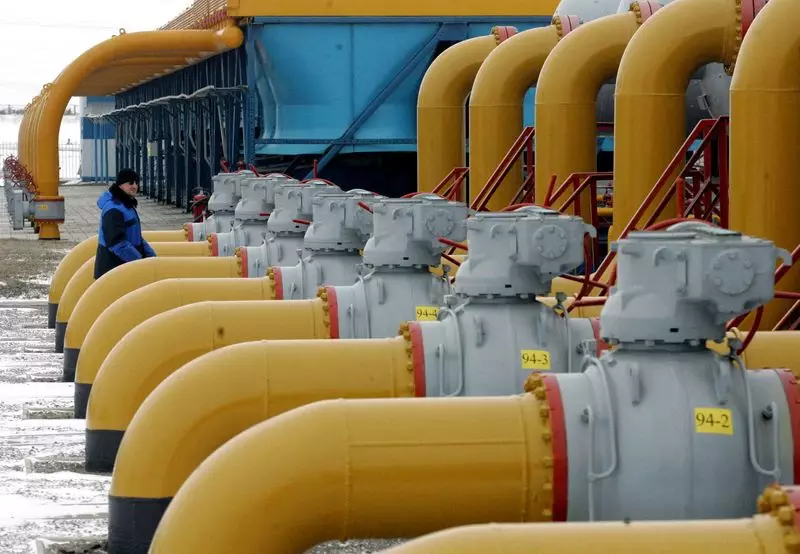In a significant geopolitical development, the flow of Russian natural gas through Ukraine towards Europe ceased on January 1, 2025, as the transit agreement between Moscow and Kyiv came to an abrupt end. This transition marks a poignant chapter in the turbulent relationship between the two nations, which has been fraught with tension and conflict since Russia’s annexation of Crimea in 2014. In the wake of an ongoing military conflict, the prospects of negotiation remained bleak, ultimately culminating in the cessation of what was once a primary energy conduit for Europe.
Ukrainian Energy Minister German Galushchenko heralded this shutoff as a landmark event, asserting that Russia’s dwindling market access in Europe would result in profound financial repercussions. Indeed, the withdrawal not only represents a blow to Russian energy exports but symbolizes a broader shift in Europe’s energy landscape, where nations are increasingly determined to reduce their reliance on Russian sources. Following the onset of the war in February 2022, Ukraine’s stance became resolute; negotiations to extend the transit agreement were unwarranted given the hostile backdrop.
Historically, the pipelines that facilitated Russian gas to Europe via Ukraine accounted for a substantial portion of Gazprom’s exports. However, as the military conflict escalated, the scenarios that Gazprom had anticipated—predicated on the continuance of transit flows—quickly evaporated. With half of Russia’s gas exports to Europe previously traversing these networks, the implications of this stoppage are staggering. Although alternative routes like the TurkStream pipeline persist, their capacity to replace the lost volume is notably limited.
TurkStream, which has two separate lines for Turkish domestic supply and European markets, still operates and offers one lifeline for Russian gas exports; however, key consumers have diversified their energy sources to circumvent reliance on Russia completely. Countries like Slovakia and Austria have proactively sought alternative supplies, further underlining the dwindling significance of Russian gas in the European market.
The halting of gas flows through Ukraine has catalyzed various European nations, particularly those with close ties to Russian energy, to expedite their transitions to alternative energy sources. The European Union, in the wake of heightened alarm following the military conflict, has systematically expanded efforts to lessen dependency on Russian energy. With Moldova and other neighboring countries now confronted with acute shortages and the specter of gas rationing looming, the urgency for energy independence has never been more pronounced.
The loss of revenues from transit fees looms over Ukraine’s financial landscape, with estimates hovering around $800 million annually. Conversely, Gazprom faces significant losses that could approach $5 billion as it grapples with vanishing sales opportunities. The fallout extends beyond economic strains—countries previously interconnected through this energy lifeline now contend with an uncertain future.
The closure of this longstanding energy artery carries profound implications not only for the energy sector but also for the geopolitical narrative in Europe. For decades, Russia held considerable sway over the European energy market, even earning accolades for the vast pipeline infrastructure developed across the continent. However, the aftermath of ongoing conflicts has precipitated a tectonic shift, decimating Russia’s once-dominant position. Compounding this, the destruction of the Nord Stream pipeline and the closure of the Yamal-Europe route have eliminated crucial channels, with Russia’s share of the European gas market plummeting in the process.
The war has undoubtedly altered the energy dynamics, compelling European nations to forge resilient pathways for energy supply and thus diminishing Moscow’s leverage. As the year unfolds, the fate of Russian energy exports hangs in the balance—its prolonged absence from the European energy narrative could signal a definitive end to its historical dominance.
As the smoke clears on this chapter of the energy saga, the question remains: what does a Europe devoid of Russian gas look like in the long term? With ambitious plans for renewables and a quest for alternative supplies, the continent is potentially steering towards newfound energy independence. While the immediate future may be marked by challenges and adjustments, the long-standing evolution away from Russian energy could represent a turning point that reshapes European energy strategy for generations to come. As the stakes escalate, one thing is clear: Europe’s commitment to navigating this new reality is unwavering, even as Russia confronts the fallout of its strategic miscalculations in a fractured geopolitical landscape.

